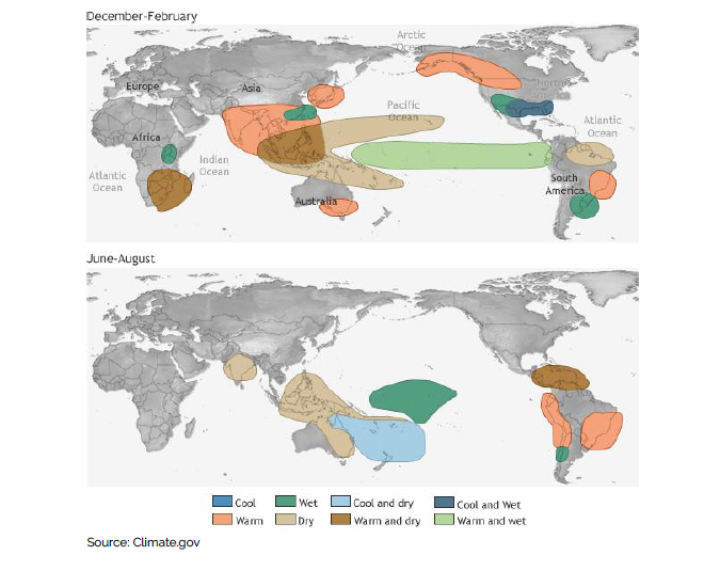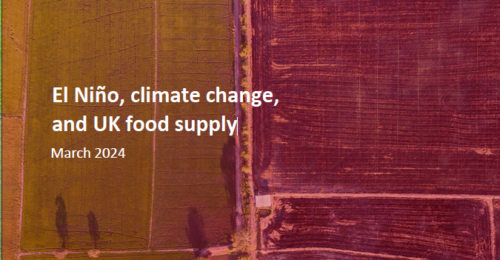El Niño, climate change, and UK food supply
We explore the UK food imports from around the world at risk as El Niño has been turbo-charging climate change impacts which are already harming crops, risking shortages and driving price rises.
Last updated:
Climate change-driven extremes of hot and cold, drought and flood, as well as overall temperature rises, pose serious threats to agriculture. Failed crops, lower yields and poorer quality produce result in shortages and higher prices, putting global food supply chains in jeopardy.
2023 was the hottest year human civilisations have ever experienced, with eye-watering temperature records set throughout the year on both land and sea. These extremes, and those which have continued into 2024, were the product of an interaction between human-induced climate change, caused by our pumping of greenhouse gases into the atmosphere, and the natural climate phenomenon El Niño that re-emerged last summer.
El Niño occurs every few years and is the warming phase of the El Niño Southern Oscillation (ENSO). Its sister phase, La Niña, has a cooling effect. Historically, El Niño has always wreaked havoc on agriculture, but its combination in more recent times with climate change is proving to be devastating, as both raise global temperatures. Together, they’re pushing the limits of what crops and livestock can tolerate.
With the World Meteorological Organisation (WMO) predicting that this El Niño will last until at least April 2024, more broken temperature records are likely into 2024, and it’s possible this year could be even hotter than the last.
In the UK, we import half of the food we eat. Around half of that is made up of commodities we do not grow here, with a similar proportion coming from climate impact hotspots. While each El Niño event manifests slightly differently, with the only certainty being its warming effect, this report aims to highlight common trends in different countries and the potential consequences for UK food imports.
El Niño climate impacts

